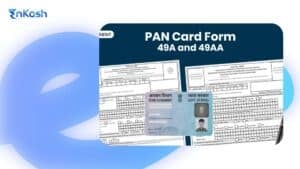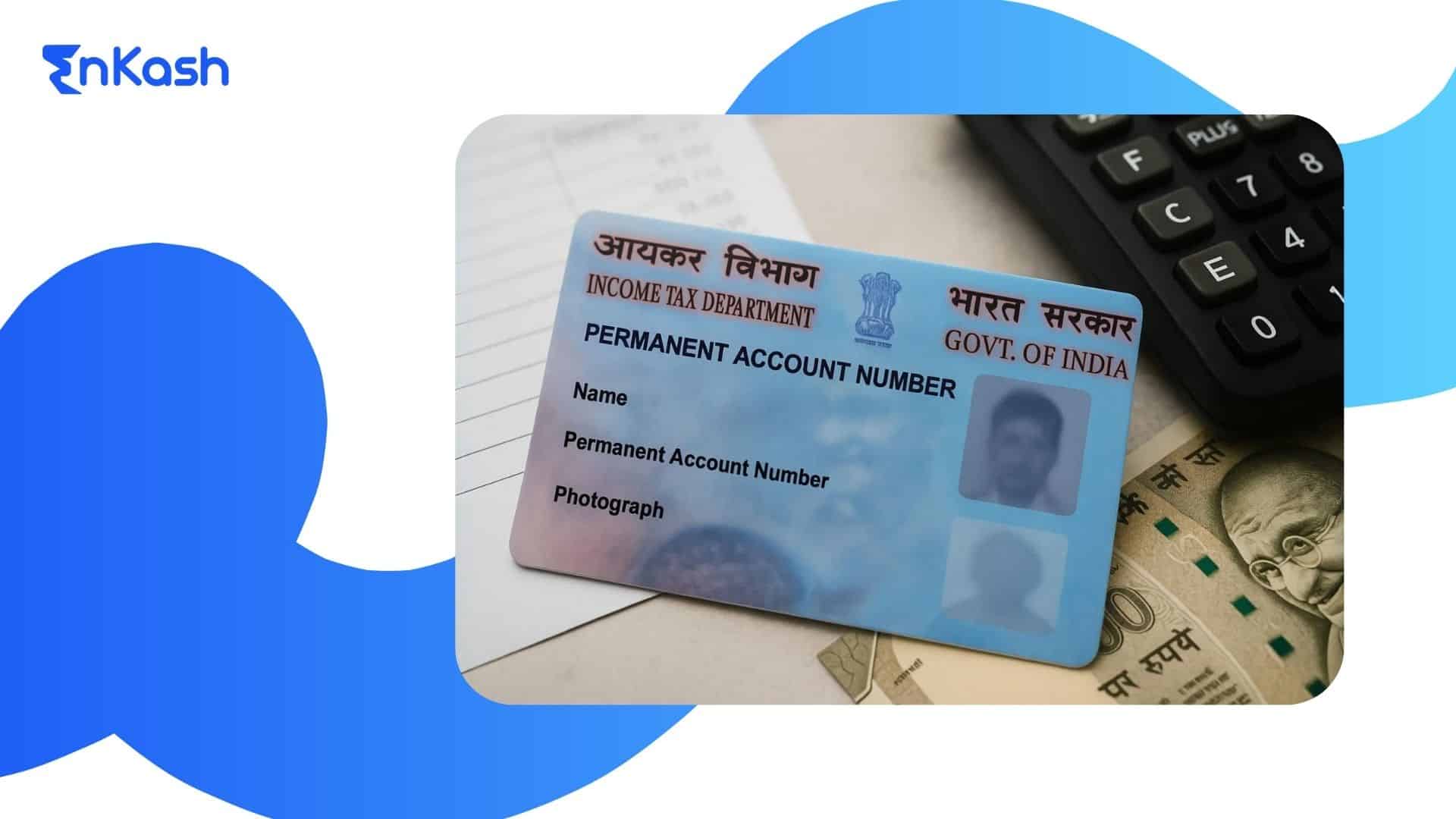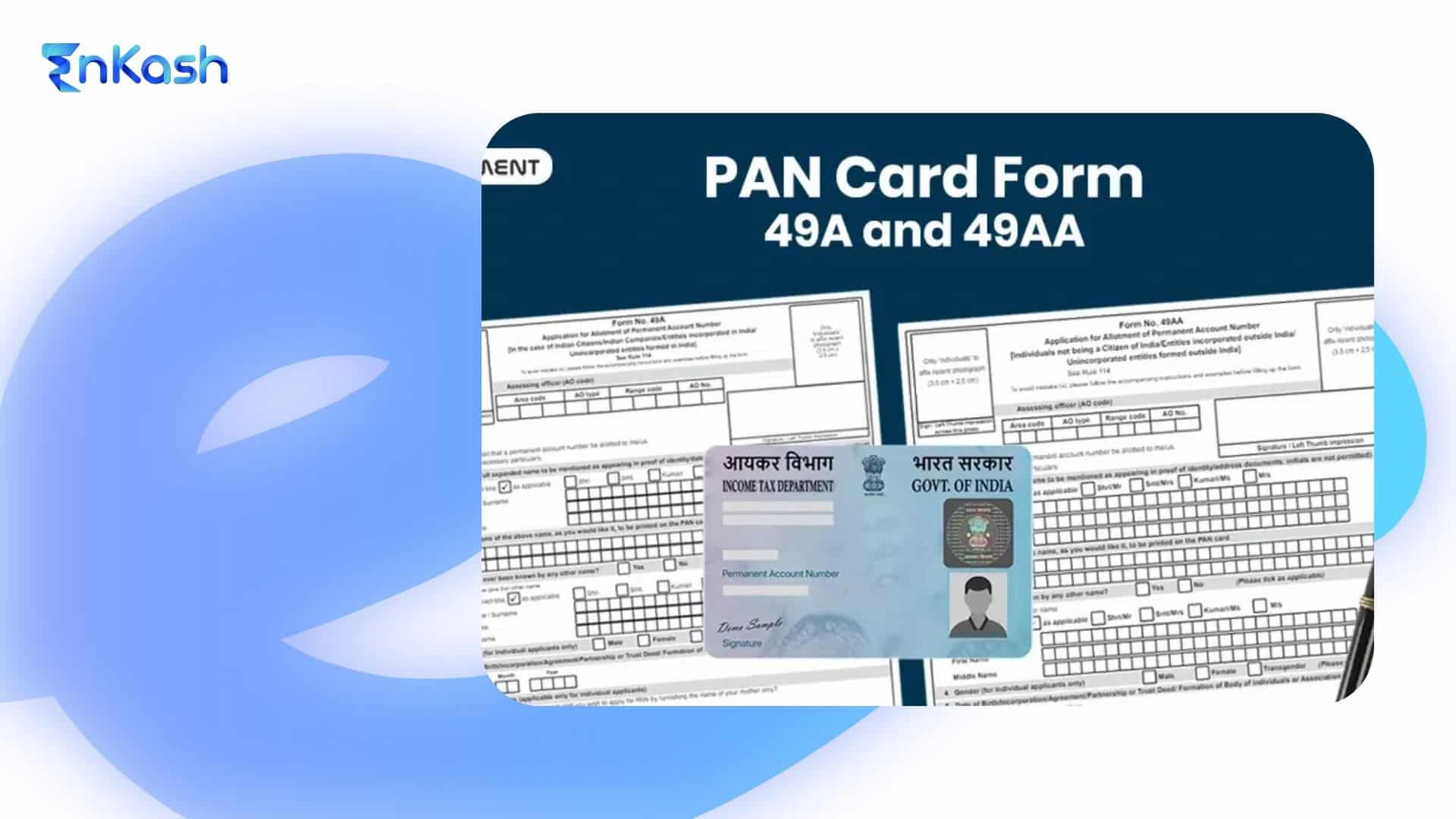What is a Partnership Deed?
A partnership deed is just a written agreement between people who’ve decided to run a business together. It lists how much each person is putting in, how the profits or losses will be shared, who’s handling which part of the work, and what happens if someone wants to step away or if things start going off track.
Plenty of businesses in India start casually. Maybe two friends pool money to open a printing shop, or a few cousins start a small trading firm. Everyone agrees on the basics during a few conversations and gets going. But as the business grows, or if someone wants to change the way things work, that earlier understanding can start to blur. One person might feel they’re putting in more effort, another might question how the profits are being split, and there’s nothing on paper to check or refer to.
Documenting everything in a proper partnership deed format clears that up. It gives everyone a common reference, not just for internal matters, but even when dealing with banks, applying for GST, or handling any formal process. Most authorities ask for a copy when the firm applies for a loan, opens a current account, or even signs a bigger deal.
Some people call it a partnership agreement instead of a deed, but the idea stays the same. It just helps put structure to a shared business. It doesn’t need to be fancy. It just needs to be clear and agreed upon by everyone involved. Even if the firm hasn’t been officially registered yet, having this deed makes daily operations smoother, though enforceability in legal matters is limited for unregistered firms. It’s one of those things that’s easy to skip in the beginning, but often ends up being the one document people look for when something goes wrong, or when something starts working well.
What Partnership Deed Contains (And Why Every Clause Matters)
People often see the partnership deed as just one of those documents you prepare because it’s required. But in real day-to-day business, the clauses inside it can make a big difference. It’s about being clear on how the business will run, who’s responsible for what, and how things will be handled when there’s money, decisions, or disagreements on the table.
What does a basic partnership deed format include? It covers a bunch of practical things.
Clause in the Deed |
What It Means |
Why It’s Useful |
|---|---|---|
Name of the firm |
The official name chosen by the partners |
Needed for GST, current account, PAN, and other registrations |
Nature of business |
The type of work the firm will do — trading, services, manufacturing, etc. |
Keeps things clear if one partner wants to start a side activity or change direction later |
Capital contribution |
How much money or assets each partner is putting in |
Helps avoid confusion about ownership and profit share |
Profit and loss ratio |
The agreed way to split profits and losses |
Prevents arguments when earnings start or losses come in |
Roles and duties |
Who will handle what part of the business |
Avoids overlap, blame, or imbalance in workload |
Salaries or drawings |
If any partner gets a fixed monthly amount |
Keeps expectations clear, especially if one partner is more hands-on |
Bank authority |
Who can sign cheques, use internet banking, or operate accounts |
Protects the firm from misuse and ensures that control is defined |
Adding new partners |
How can a new person be brought into the firm |
Keeps control within the existing group, avoids future surprises |
Exit process |
What happens when someone wants to leave |
Ensures the firm doesn’t get stuck or lose money in sudden exits |
Conflict resolution |
How disputes will be sorted — majority vote, mediation, etc. |
Gives a way to solve problems without taking everything to court |
Some deeds also include smaller things, like how much time each partner should give to the business, whether loans can be taken in the firm’s name, or how assets will be valued if the firm shuts down. These things may sound unnecessary in the beginning, but they’re usually the first points of argument once real money is involved.
How to Draft a Partnership Deed in India
Step 1: Start with the Basic Details
Every deed starts by introducing the firm and the people involved. These lines should include:
- Name and address of the partnership firm
- Nature of the business (what the firm will do)
- Date when the business officially starts
- Names, addresses, and ID details of each partner
- Duration of the partnership (if it’s for a fixed term, or ongoing)
These sound routine, but they matter. A mismatch in dates or unclear business activity can create trouble during registration or while applying for loans later.
Step 2: Mention Capital Contributions Clearly
This is where money and assets come into the picture. Mention:
- How much money each partner is investing
- Whether contributions are in cash, property, goods, or machinery
- What happens if more funds are required later (fresh contribution rules)
If one partner is contributing more than the others, it needs to be written down, along with any agreed-upon preference in returns or profit share.
Step 3: Define Profit and Loss Sharing
Probably the most referred-to clause in the whole deed. Keep it direct:
- What share of profits each partner will get
- Whether losses will be shared in the same way
- If one partner won’t share losses, that needs to be written
Don’t assume things will remain friendly forever. These lines protect the firm when money becomes a serious topic.
Step 4: Divide Duties and Rights
Instead of leaving things vague like “both partners will manage the business,” assign roles based on discussions:
- Who will handle the day-to-day operations
- Who will take care of finances or vendor dealings?
- Who has the right to make binding decisions?
- Who can sign cheques or access bank accounts?
Even if roles overlap, it helps to write what’s expected of each person.
Step 5: Add Clauses for Salary or Drawings (If Any)
If any partner is going to take a fixed monthly amount as salary or drawing:
- Mention how much and how often
- Whether it’s before or after profit calculation
- If other partners have agreed to it or not
This avoids future questions like “Why is one person taking out more money?”
Step 6: Include Rules for Exit, Retirement, or Death
It’s not something people like to think about, but the deed should answer:
- What happens if a partner wants to leave
- What’s the process if a partner dies or retires
- Whether the heirs can take over or if the firm should be dissolved
- How valuation will be done while settling the outgoing share
A clear exit clause avoids emotional and financial stress later on.
Step 7: Include a Dispute Resolution Clause
Even with the best intentions, disagreements can happen. The deed should state:
- Whether issues will be resolved through a majority vote
- If an external mediator or arbitrator will be used
- Whether decisions will be binding or open to court appeal
Most partners never read this clause until they need it, but when they do, it saves time and relationships.
Step 8: Print It on Stamp Paper and Sign Properly
Once all the content is finalized:
- Print the deed on non-judicial partnership deed stamp paper (value depends on the state and capital amount; usually ₹500–₹2,000)
- Get it signed by all partners
- Have two witnesses sign as well
- Each partner should get a copy; one original should be stored safely
Some people also notarize it, especially if the firm isn’t being registered immediately.
Cost of Making a Partnership Deed in India
Making a partnership deed doesn’t cost a lot, but there are a few things to budget for. The total cost depends on the state, how much capital the partners are putting in, and whether the firm is getting registered.
Here’s what usually needs to be paid:
1. Stamp Paper Charges
The deed must be printed on non-judicial stamp paper.
Charges vary by state some have a flat fee (e.g., ₹500–₹2,000), while others calculate stamp duty as a percentage (typically 1%) of the capital contributed
2. Drafting Charges
If the partners write the deed on their own, there’s no cost. But many get help from an accountant or lawyer.
- Simple drafts: ₹1,000 to ₹2,500
- Legal help: ₹3,000 to ₹10,000
3. Notary Charges (Optional)
Notarizing the deed is not compulsory, but many still do it.
Costs around ₹100 to ₹300
4. Registration Charges (Optional)
Registering the partnership firm is optional under law, but not registering restricts the firm from enforcing legal claims in court, which can be a major disadvantage.
- Government fee: Around ₹1,000 to ₹1,500
- If done through a professional, add ₹1,500 to ₹3,000
Total Estimated Cost
Item |
Cost |
|---|---|
Stamp Paper |
₹500 – ₹2,000 |
Drafting |
₹1,000 – ₹10,000 |
Notary |
₹100 – ₹300 |
Registration |
₹1,000 – ₹1,500 |
Professional Help |
₹1,500 – ₹3,000 |
So, the total cost can start from just ₹1,000 (if done by the partners themselves) and go up to ₹10,000 or more if professionals are involved and the firm is registered.
Is Partnership Deed Registration Mandatory in India?
No, registering a partnership deed is not compulsory in India. A partnership firm can be started and run even without registration. However, not registering the firm can cause problems later, especially when it comes to legal matters or business deals.
Here’s how it works:
What the Law Says
Under the Indian Partnership Act, 1932, registration is optional. However, unregistered firms cannot enforce contractual rights through the court system, which can severely impact dispute resolution. This means a partnership can be legal even if it’s not registered with the
Registrar of Firms.
However, there are a few important points to keep in mind.
Why Many Still Choose to Register?
Even though it’s not required by law, many businesses still register their partnership firm. Here’s why:
- A registered firm can file a case in court. An unregistered firm generally cannot initiate legal proceedings against third parties, but can still be sued by others
- Banks, government departments, and large clients often ask for registration proof before signing contracts or giving loans.
- It makes the business structure more formal and helps avoid confusion between partners.
When Registration Is Useful
It’s better to register the deed if:
- The firm is dealing with large payments or outside parties
- The partners want clear legal rights in case of disputes
- The business is planning to apply for loans, tenders, or government registrations
When It Might Be Skipped
Some small businesses or family-run firms skip registration when:
- The business is very small or local
- All partners trust each other fully
- There are no plans to work with banks or outside clients
Validity of a Partnership Deed – And When It Becomes Void
There’s no expiry date printed on a partnership deed. Once it’s made, it stays valid unless something changes that directly affects the agreement between partners.
But that doesn’t mean a deed works forever without updates. Let’s break it down:
A. Is a Partnership Deed Time-Bound?
No, a partnership deed doesn’t have a fixed life. It continues to be valid as long as:
- The business is active
- The partners and their terms remain the same
- No event breaks the agreement
However, if the deed mentions a specific duration (like 5 years), or if it’s created for a particular project or purpose, then it will automatically end once that period or goal is over unless renewed.
B. When Does a Deed Become Invalid or Outdated?
A partnership deed becomes invalid if something important changes and the deed isn’t updated. Common situations include:
- A partner retires, dies, or is removed
- A new partner is added
- The capital contribution changes significantly
- The profit-sharing ratio is revised
- The business nature or firm name changes
Any of these would make the old deed outdated, and a fresh deed (or amendment) should be prepared and signed again.
C. What If Nothing Is Updated?
If the deed is not updated after such changes, it can cause issues with banks, tax departments, or during disputes. In case of legal action, only the latest signed and valid deed is considered.
Also, if the firm is registered, any major change should be reported to the Registrar of Firms within the timeline set by state rules.
D. Can There Be More Than One Deed?
Yes. If there are changes, a new partnership deed can be made or an amendment deed can be added to the original one. Both are valid as long as they’re signed and agreed upon by all partners.
Many firms keep their original deed safe and attach newer versions as and when needed.
When and How to Modify an Existing Partnership Deed
A partnership deed isn’t something that’s made once and forgotten. As the business grows or changes, the deed may need updates too.
When Does a Partnership Deed Need to Be Changed?
Here are some common reasons:
- A new partner joins the firm
- One of the partners leaves or passes away
- Profit-sharing ratios are changed
- Capital contribution is increased or reduced
- The name, business address, or nature of the business changes
- Partners decide to change any major clause (like roles, duties, decision-making process)
Any of these changes mean the current deed no longer reflects the real picture. That’s when it’s time to update it.
How Are Changes Made?
Partners usually don’t throw away the old deed. Instead, they prepare a supplementary partnership deed, a simple document that mentions:
- What’s being changed
- Why it’s being changed
- From when the change takes effect
- Signatures of all partners (including new ones, if added)
This supplementary deed is added to the original one. So both documents together form the updated agreement.
Does It Need to Be Registered Again?
If the original partnership firm was registered, then yes, the change should be reported to the Registrar of Firms. Some states need the supplementary deed to be submitted within a specific number of days.
If the firm was never registered, there’s no legal need to report the change. But even in that case, it’s smart to have the new deed signed and notarised, so that all partners are protected.
Updating the deed keeps the business records clear and current. It also avoids confusion or conflict later, especially in matters involving banks, taxes, or legal issues.
Conclusion
Running a business with a partner means sharing both the good and the tough parts: profits, decisions, risks, and responsibilities. But even when the trust is strong, things can change over time. People may come and go, priorities shift, misunderstandings happen, or new opportunities show up that weren’t part of the original plan.
This is where a partnership deed really helps. It keeps everything written down, not to question anyone’s word, but to make sure everyone’s rights and roles are clear from the beginning. It puts structure around the business relationship so that decisions don’t turn into disputes and daily operations don’t get slowed down by confusion.
For businesses that are just starting out or choosing partnership as a structure, having a clear, well-thought-out deed can save time, protect all parties, and even improve how others see the firm, banks, government offices, clients, or vendors.
Even when the deed is not registered, having it in place gives a base to work from. And if the firm is registered, keeping the deed updated is just as important. Every amendment, addition, or change, whether it’s a new partner joining or someone adjusting their role, needs to be written down. In business, clarity always matters more than memory.
Partnerships can work well when built on trust, but they last longer when backed by clear agreements.
FAQs
1. Is a partnership deed mandatory in India?
No, it’s not legally required. But without it, any confusion or disagreement between partners can get messy. A written deed makes things clear and protects all partners.
2. Can a partnership firm work without registration?
Yes, it can. But if the firm isn’t registered, it can’t file a case in court if something goes wrong with a customer, supplier, or even between partners. Registration gives it legal backing.
3. Do we need to register the deed separately?
Yes. If the firm is being registered, the signed partnership deed is submitted to the Registrar of Firms. If you’re not registering the firm, still get the deed signed on stamp paper and notarized. While this doesn’t provide the legal standing of registration, it can help in practical matters like opening bank accounts or filing for GST.
4. What is the minimum number of partners required?
At least two people are needed to form a partnership firm in India.
5. What kind of stamp paper is needed for a partnership deed?
The deed should be printed on non-judicial stamp paper, usually worth ₹500 or more; the exact value depends on the state. After that, all partners sign it.
6. Can a partnership deed be changed later?
Yes, it can. If there’s any major change like adding a partner or changing the profit ratio, a supplementary deed should be made and signed by all partners.
7. Do all partners have to sign the partnership deed?
Yes. Every partner must sign the deed. Without the signatures of all partners, the deed is not considered valid.
8. Can a partnership firm have a PAN card?
Yes, it must. After the deed is made, the firm needs to apply for a PAN in its name through the Income Tax Department. It’s needed for opening a bank account or filing taxes.
9. Is GST registration linked to the partnership deed?
Yes. When applying for GST, the partnership deed is one of the required documents. It helps confirm the legal structure and details of the firm.
10. Who keeps the original partnership deed?
Usually, one partner keeps the original and the others keep copies. But if the firm is registered, a copy is also submitted to the Registrar of Firms.












